Educational Software
In The News...
Indiana to Deploy Desktop Linux for Education
Aug 18, 2005 By News Staff
Thousands of high school students in Indiana will return to class this fall with computers running Linux at their desks.
Indiana will deploy computers built into student desks, starting with 1,600 desktops based on Intel platforms this fall; Novell will supply its Linux operating system.
Ultimately, more than 300,000 Indiana high school students will have more immediate access to educational resources and increased opportunity for accelerated learning.
"Although initial funding for the Indiana ACCESS (Affordable Computers for Every Secondary Student) initiative comes from the state, many of the schools themselves think this is such a great idea that they are kicking in their local dollars to accelerate the deployment of the computer systems," said Mike Huffman, special assistant for technology for the Indiana Department of Education.
"Indiana is committed to progress and improvement in education, and this initiative will allow for online testing, increased access to information, and many other means to enhance learning for students and give both teachers and students ready access to modern tools to promote achievement and learning.
Open systems offer many advantages, the foremost being cost savings for schools."
"This initiative to achieve a 1:1 student-to-computer ratio in Indiana high schools is driven by the learning needs of the students," Huffman said. "But at the same time, cost is a huge issue. With Linux desktops providing all of the functionality students need in an open environment at an extremely low cost, schools will be better able to educate students and prepare them for life after high school."
The KDE-Edu project was started in July 2001. The goal of the project is to develop free educational software (GPL licence) within the KDE environment. This software is mainly aimed to schools and to parents at home.
A new KDE module was created, the kdeedu module. The applications in that module should be fully KDE compatible (use of KMainWindow, XML GUI, ...) and must get a proper documentation handbook in docbook format. Thus, all applications interfaces and documentation will be translated in more than 50 languages, via the i18n KDE teams.
Free software is not very much used in schools or at home. Linux is even less used on the desktop. We would like to contribute to the effort of offering less costly tools to schools so money can be spent for other needs. We team with other projects in order to achieve that.
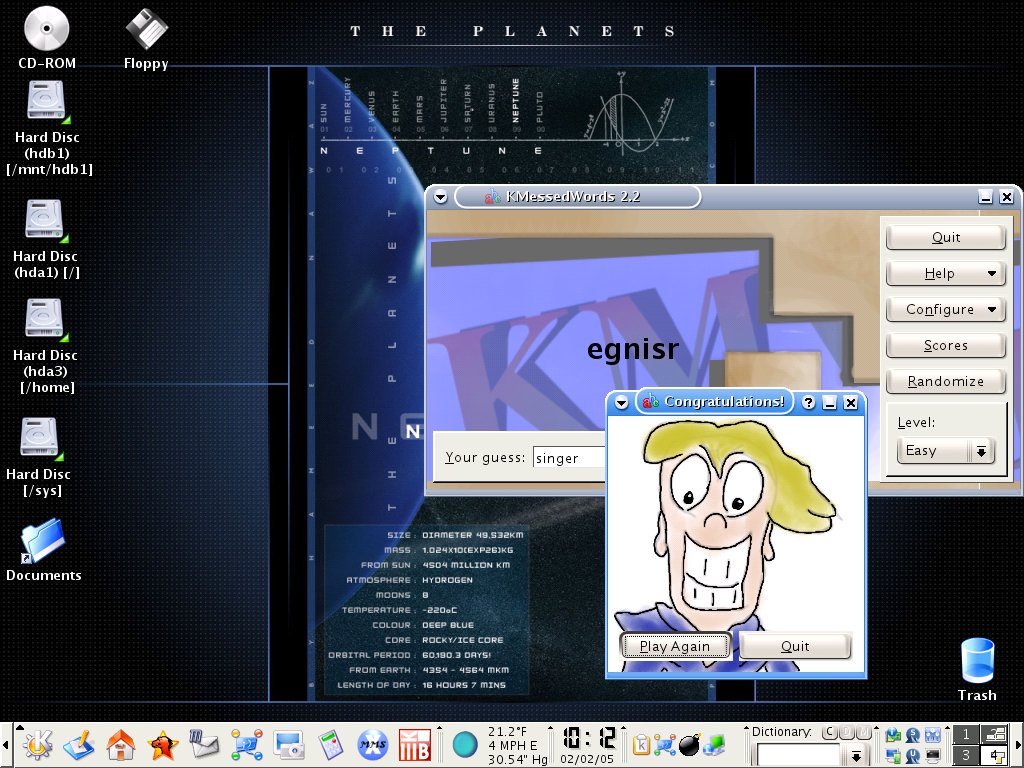
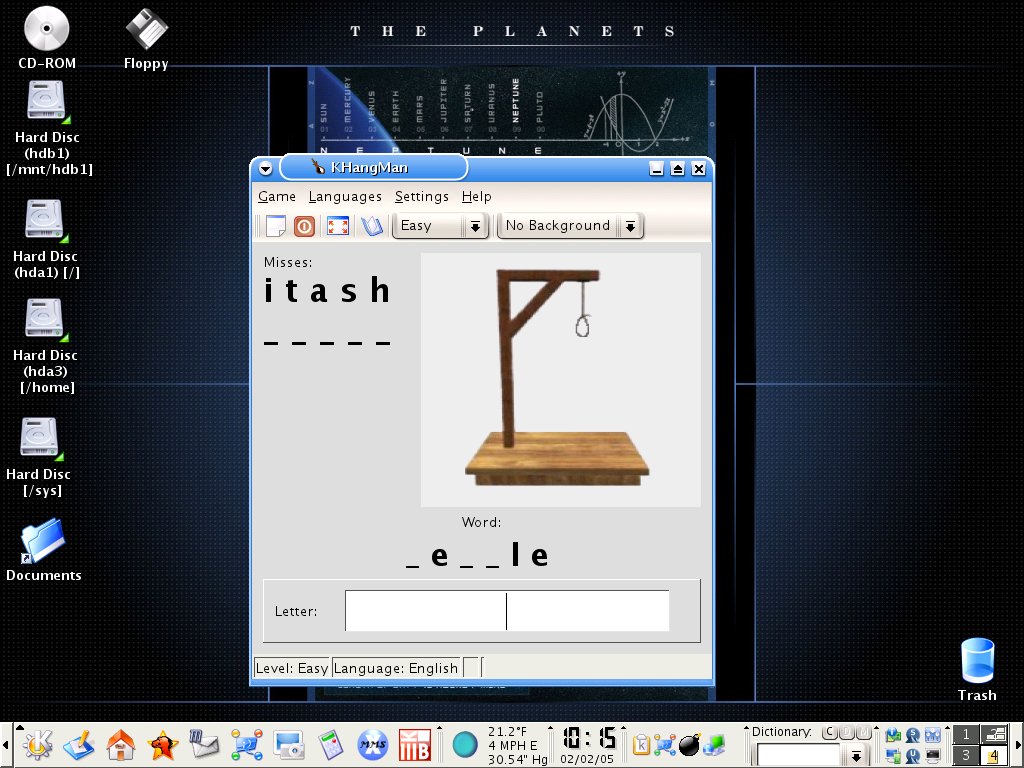

KGeography
KGeography is a geography learning tool.
Right now it has six usage modes:
* Browse the maps clicking in a map division to see it's name
* The game tells you a map division name and you have to click on it
* The game tells you a capital and you have to guess the division it belongs to
* The game tells you a division and you have to guess its capital
* The game shows you a map division flag and you have to guess its name
* The game tells you a map division name and you have to guess its flag

MathWar
A flash card game designed to teach maths
A GTK application that teaches kids (and adults) how to
respond quickly to math problems using flash cards and timers.
It includes a Computer player, where the player gets to
decide if the Computer is right or not.
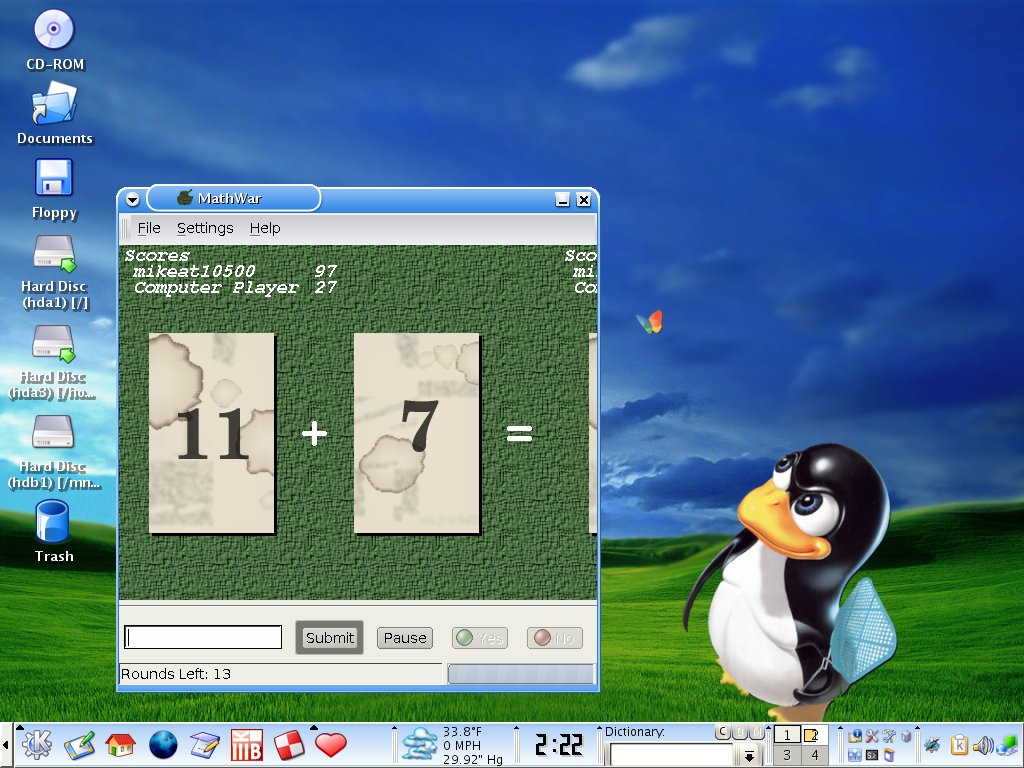
Kiten
The Kiten Handbook
Kiten is a Japanese reference/learning tool.
Kiten features:
* Search with english keyword, Japanese reading, or a Kanji string on a list of EDICT files.
* Search with english keyword, Japanese reading, number of strokes, grade number, or a Kanji on a list of KANJIDIC files.
* Comes with all necessary files.
* Very fast.
* Limit searches to only common entries.
* Nested searches of results possible.
* Compact, small, fast interface.
* Global KDE keybindings for searching highlighted strings.
* Learning dialog. (One can even open up multiple ones and have them sync between each other.)
* Browse Kanji by grade.
* Add Kanji to a list for later learning.
* Browse list, and get quizzed on them.
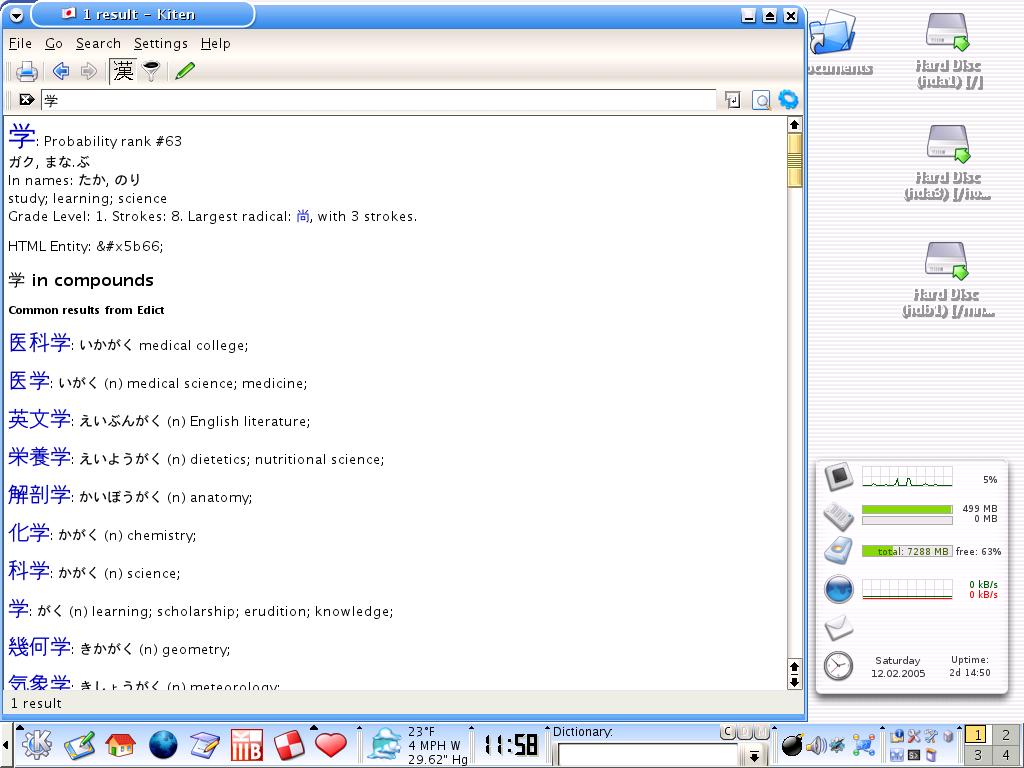
GCompris
GCompris is an educational software which propose different activities to kids from 2 to 10 years old.
GCompris is an educational software which propose different activities to kids from 2 to 10. Some activities are game oriented, but always educational.
You will find some activities in the following topics:
- computer discovery: keyboard, mouse, different mouse gesture, ...
- algebra: table memory, enumeration, double entry table, mirror image, ...
- science: the canal lock, the water cycle, the submarine, ...
- geography: place the country on the map
- games: chess, memory, ...
- reading: reading practice
- other: learn to tell time, puzzle of famous paintings, vector drawing, ...
All in all, gcompris proposes more than 60 activities and it continues to evolve. GCompris is a free software, you have the possibility to adapt it to your needs or to improve it, and, why not, to share your work with the kids of all the world.

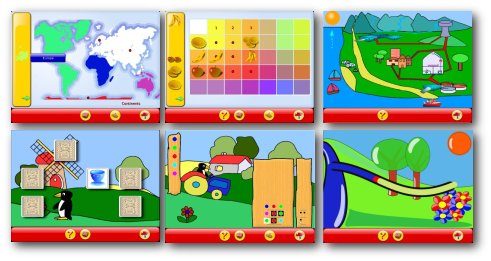
KBruch
KBruch is a small program to practice calculating with fractions. Therefor 4 different exercises are offered.
1. Exercise Fraction Task - in this exercise you have to solve a given fraction task. You have to enter numerator and denominator. This is the main exercise. The difficulty of this task can be influenced by the user. The user can decide if he wants to solve tasks with addition/substraction and/or multiplication/division. Also he can set the number of fractions and the maximum size of the main denominator.
2. Exercise Comparison - in this exercise you have to compare the size of 2 given fractions.
3. Exercise Conversion - in this exercise you have to convert a given number into a fraction.
4. Exercise Factorization - in this exercise you have to factorize a given number into its prime factors. Factorization is important while finding the main denominator of 2 fractions.
KBruch provides a handbook describing the different exercises and the general usage.
KBruch is shipped with KDE since the major version 3.2 (released February 2004).

GPeriodic
GPeriodic is a periodic table application for Linux. It allows you to browse through a periodic table of the elements, and view detailed information on each of the elements. 118 elements are currently listed.

Kalzium
Kalzium is an application which will show you some information about the periodic system of the elements.
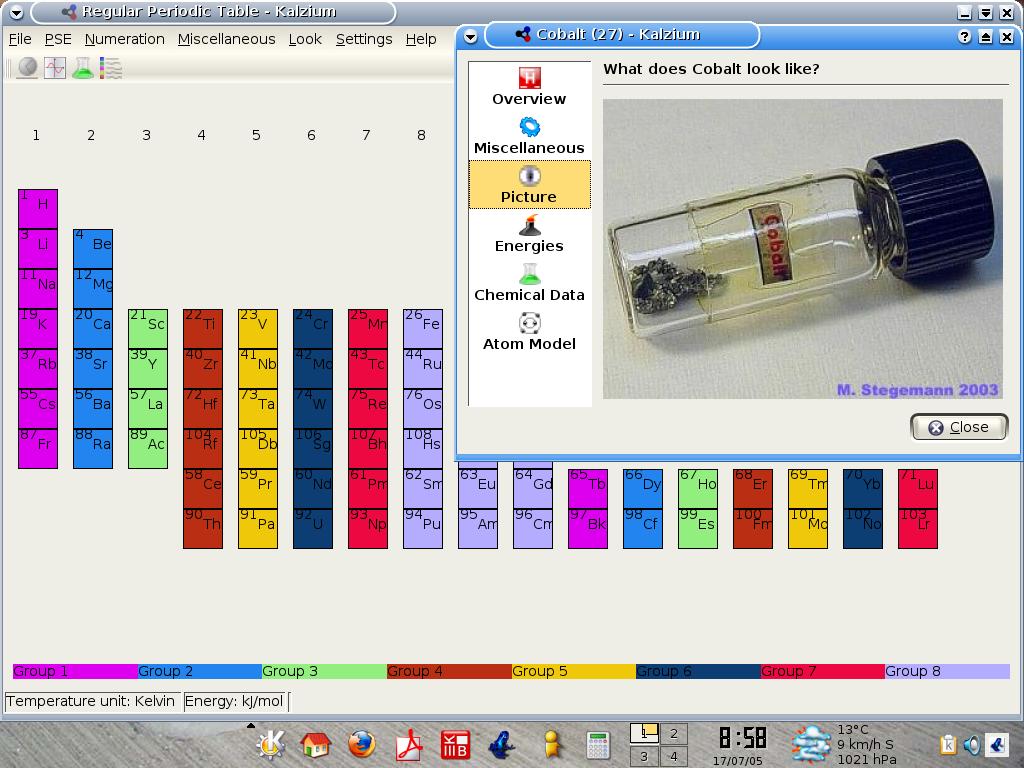
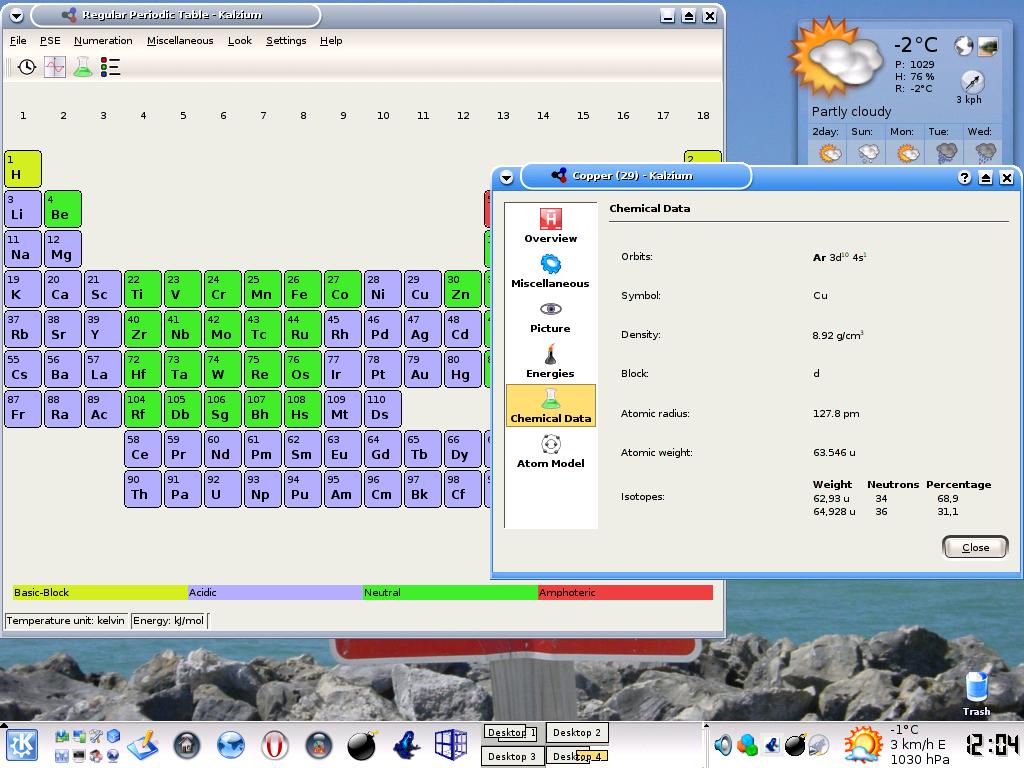
Sunclock
...fancy clock showing time and geographical data
Sunclock is an X11 application that displays a map of the Earth and
indicates the illuminated portion of the globe by drawing sunlit
areas dark on light, night areas as light on dark.
In addition to
providing local time for the default timezone, it also displays GMT
time, legal and solar time of major cities, their latitude and
longitude, and the mutual distances of arbitrary locations on Earth.
Sunclock can display meridians, parallels, tropics and arctic
circles.
It has builtin functions that accelerate the speed of time
and show the evolution of seasons
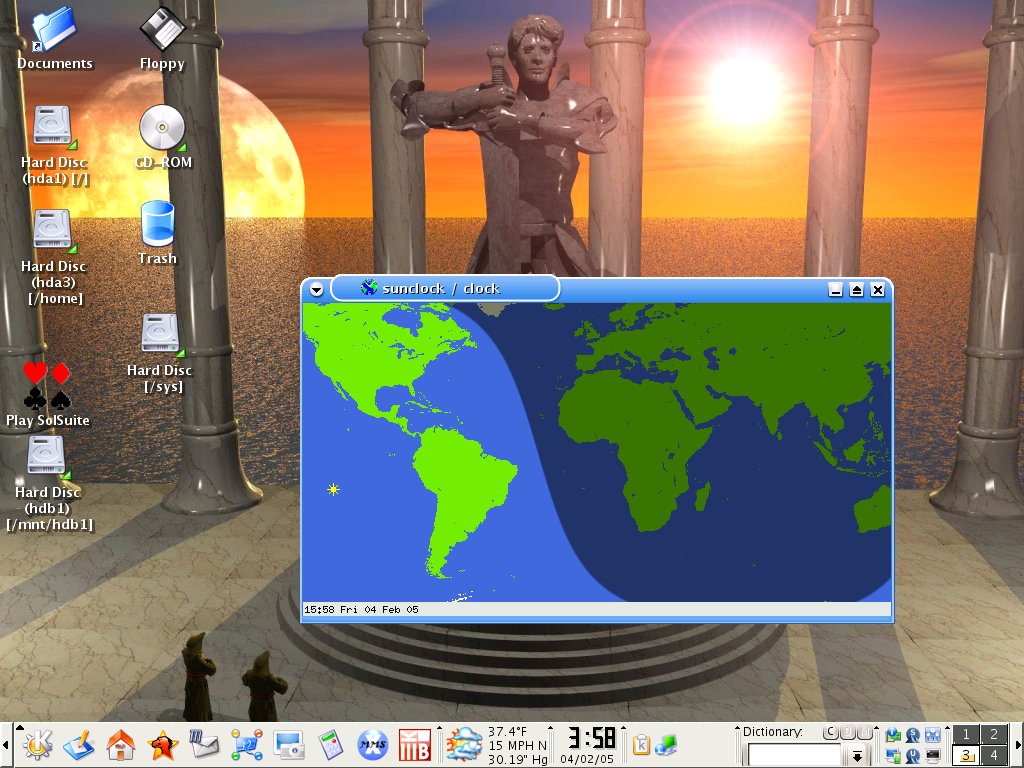


KEduca
KEduca is an educational project to enable
the creation and revision of form-based tests and exams.

KCalc
KCalc offers many more mathematical functions than meet the eye on a first glance. Please study the section on keyboard accelerators and modes in this handbook to learn more about the many functions available.
In addition to the usual functionality offered by most scientific calculators, KCalc offers a number of features, which I think are worthwhile pointing out:
*KCalc has a trigonometric and a statistics mode.
*KCalc allows you to cut and paste numbers from/into its display.
*KCalc features a results-stack which lets you conveniently recall previous results.
*You can configure KCalc's display colors and font.
*You can configure KCalc's precision and the number of digits after the period.
*KCalc offers a great number of useful key-bindings, which make using KCalc without using a pointing device easy.
Have fun with KCalc!
Bernd Johannes Wuebben
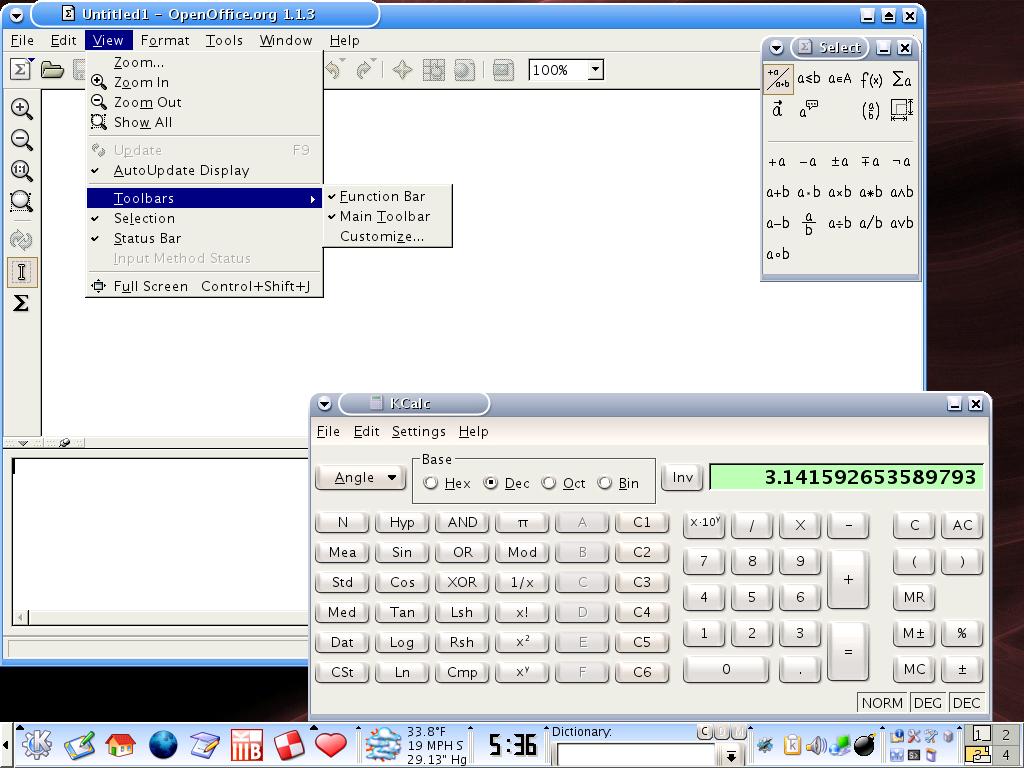
KStars
KStars Handbook
The revolution of modern Astronomy is largely due to computers. Vast farms of robotic telecopes scan the skies in completely automated fashion recording and analyzing data of interest. New supernovae, comets, minor planets, and variable stars are discovered frequently thanks to the automated nature of research-grade, and recently amateur, telescopes.
Professional Astronomers have enjoyed for decades the expensive setup offered to them by research-grade telescope. But now amateur astronomers can track and enjoy thousands of the gems in the sky with computerized GOTO systems. While the traditional sky chart approach to locating objects in the sky still has its merits, GOTO systems provide a one-click solution to locating almost any object in the heavens.
KStars provides a very convenient and intuitive interface to control many GOTO telescopes. We hope that you find KStars helpful in sailing the heavens! Bon voyage!
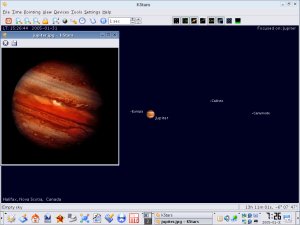



WordNet
WordNet is an online lexical reference system whose design is inspired by current psycholinguistic theories of human lexical memory. English nouns, verbs, adjectives and adverbs are organized into synonym sets, each representing one underlying lexical concept. Different relations link the synonym sets.
WordNet was developed by the Cognitive Science Laboratory at Princeton University under the direction of Professor George A. Miller (Principal Investigator).
Over the years, many people have contributed to the success of WordNet. Currently, the following individuals at Princeton work on the continuing development of WordNet and applying it to research:
* Professor George A. Miller
* Dr. Christiane Fellbaum
* Randee Tengi
* Susanne Wolff
* Pamela Wakefield
* Helen Langone
* Benjamin Haskell
Dr. Fellbaum's work was supported in part by grant No. 9805732 from the National Science Foundation.
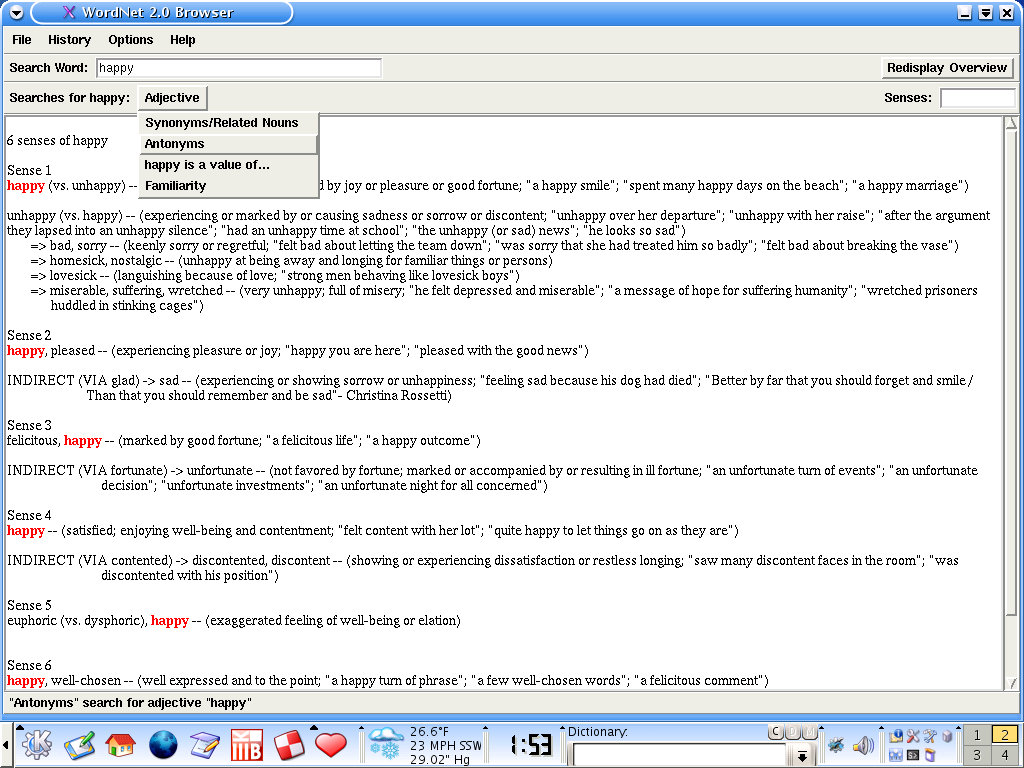
Celestia
Celestia is a real-time visual simulation of space.
Choose a point
within the Local Group of galaxies, and Celestia will show you an
approximation of how it would appear to your eyes were you actually
there.
Some of what Celestia shows is necessarily hypothetical--the
farther away from Earth you get, the less real data there is and the
more guesswork is involved.
Thus Celestia supplements observational
data with good guesses based on models of stellar and planetary
processes.
Celestia is unique in its ability to allow you to navigate at an
immense range of scales. Orbit a couple kilometers above the surface
of a tiny, irregular asteroid, then head off towards Jupiter, watching
it grow from a bright point of light into a looming sphere filling your
field of vision.
Leave our solar system entirely and observe the sun
as it fades from a brilliant disk to a bright star, disappearing almost
entirely as you head off toward the Upsilon Andromeda system to orbit
around its innermost giant planet.
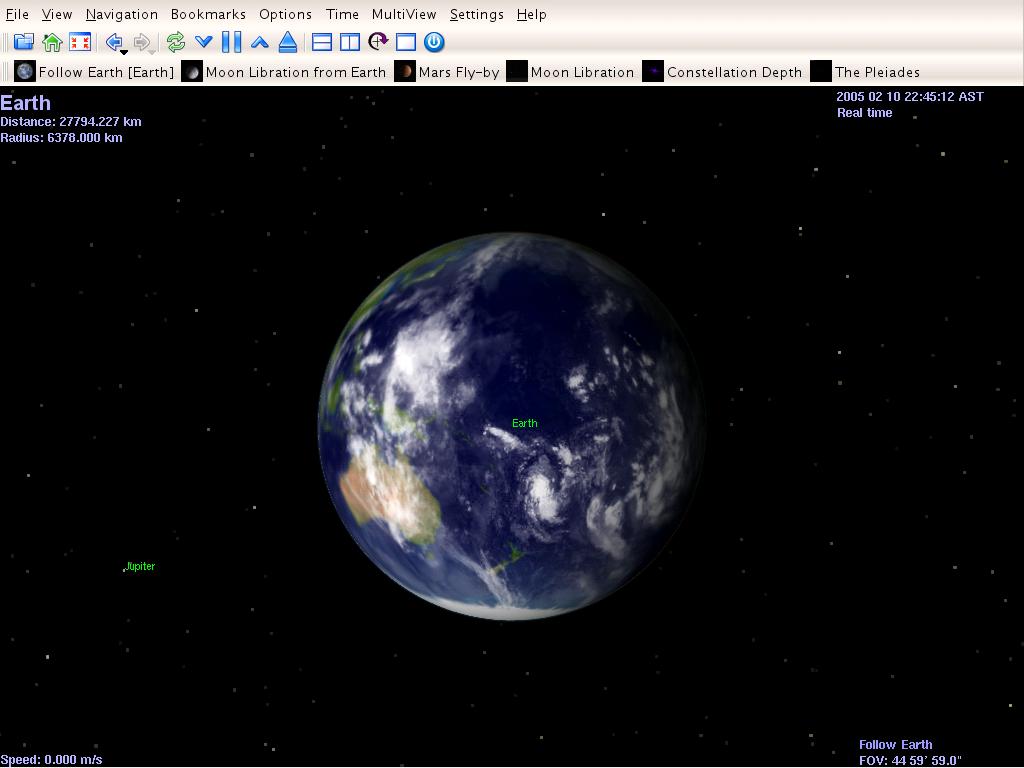

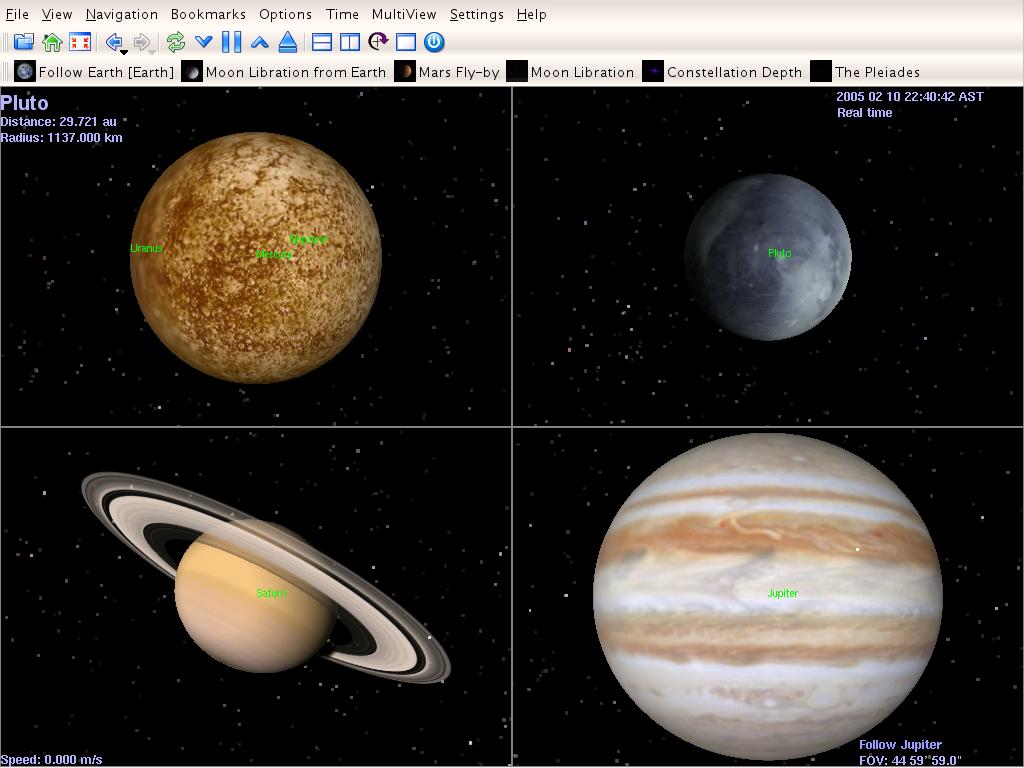
Amarok can be used to gain instant access
to lyrics and arist information
from Mozart to Zappa!


How do I get free educational software on my PC?


Wikipedia, the free encyclopedia
Free PDF eBooks Archive
by Charles Dickens,John Milton, Eleanor H. Porter, Jane Austen, Mark Twain, Lewis Carroll, Jules Verne, Robert Louis Stevenson, and many more!





























